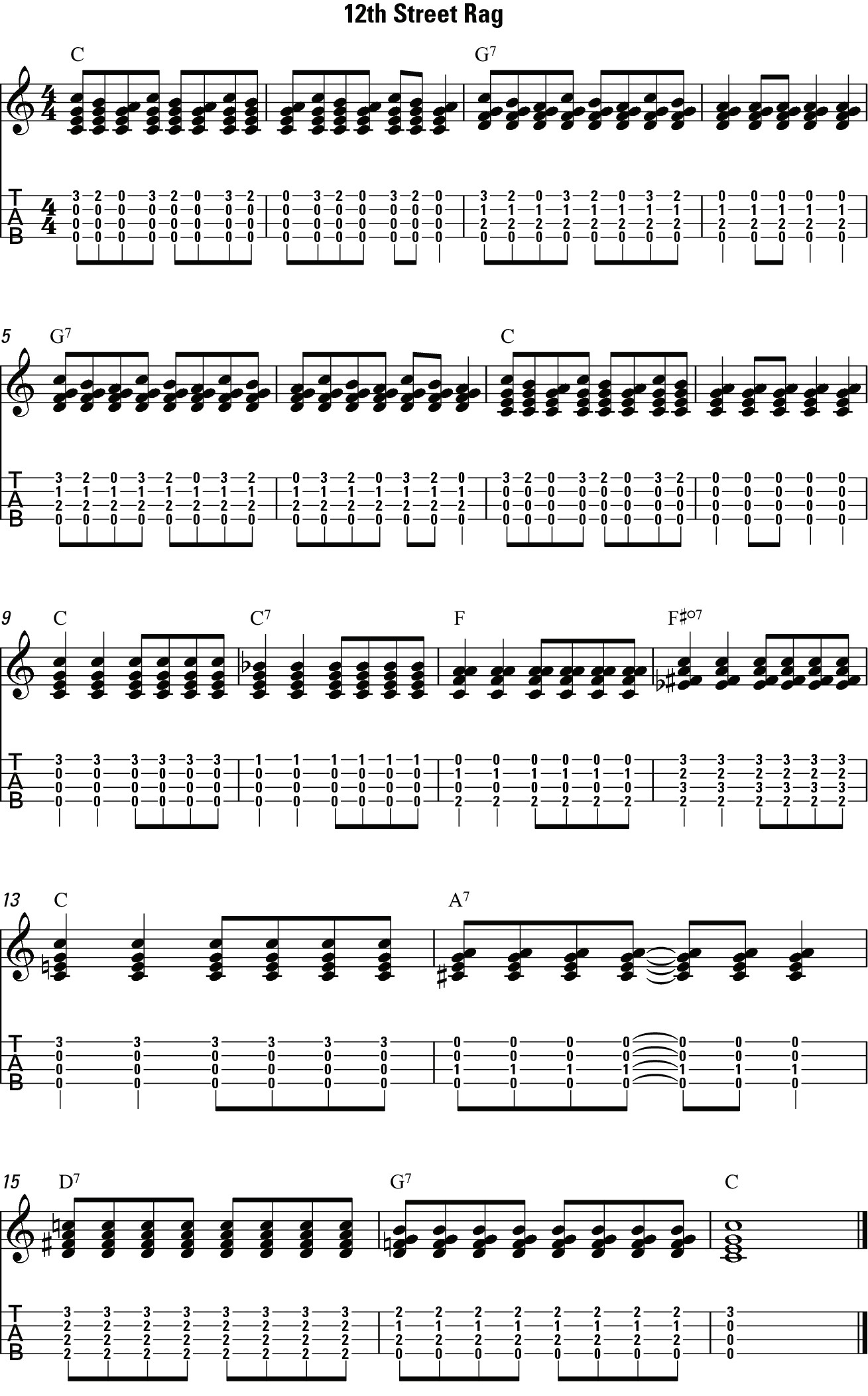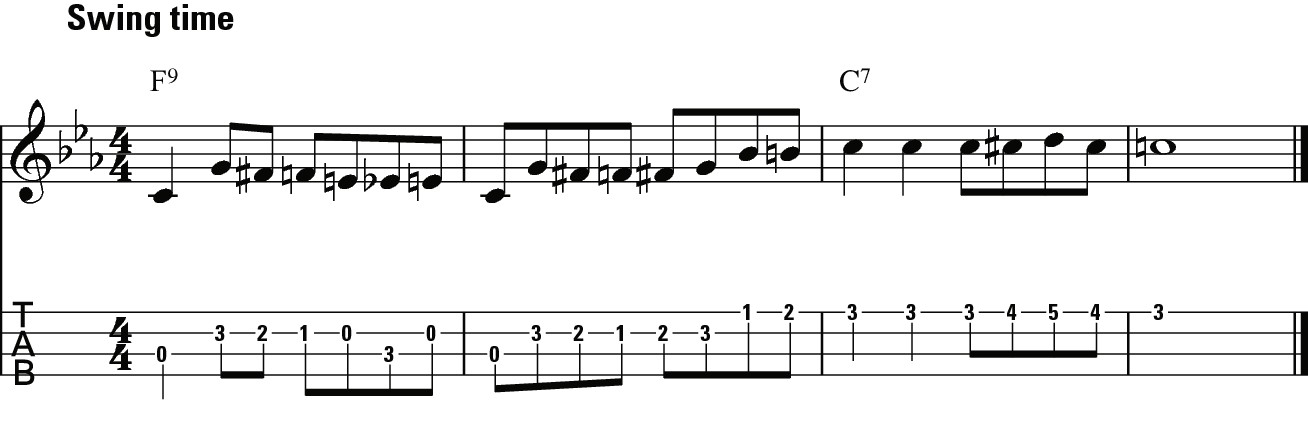Read Ukulele For Dummies Online
Authors: Alistair Wood
Ukulele For Dummies (58 page)
Figure 14-8:
Jazz turnaround with a G augmented chord.

Strumming in that Jazzy Way
Creating a jazzy sound is easy using finger strumming and split strokes. This section covers how to play a classic ragtime piece involving the jazz turnaround and an equally classic split-stroke number in the style of George Formby.
Playing a ragtime tune
Ragtime music was the immediate predecessor of jazz. It includes many of the elements that became associated with jazz, such as unusual rhythms (known as
syncopation
) and adventurous chords. Scott Joplin was the biggest composer of the day and his â12th Street Rag' has become a classic ukulele tune.
 The piece works so well because it can be easily played using the finger-strumming method from Chapter 9 to create the arrangement in Figure 14-9 (Track 84).
The piece works so well because it can be easily played using the finger-strumming method from Chapter 9 to create the arrangement in Figure 14-9 (Track 84).
The opening section of this tune is based on two chords (C and G7), with the top string following a simple third fret, second fret, open pattern. The second section of the tune is just the extended jazz turnaround from the earlier section âTurning Around, Jazz-Style' (with the strumming directions shown underneath).
Practise this tune slowly, but as you get more confident keep increasing the tempo.
 A trick commonly used with ukulele jazz tunes such as â12th Street Rag' and âCrazy G' (and the classical âWilliam Tell Overture') is to start off playing the tune at a fairly relaxed tempo and then repeat it at a higher tempo. This technique can really fire up an audience.
A trick commonly used with ukulele jazz tunes such as â12th Street Rag' and âCrazy G' (and the classical âWilliam Tell Overture') is to start off playing the tune at a fairly relaxed tempo and then repeat it at a higher tempo. This technique can really fire up an audience.
Figure 14-9:
Tab for â12th Street Rag'.

Hitting the split stroke
The
split stroke
is a highly effective ukulele soloing technique particularly associated with George Formby. It takes advantage of the ukulele's unique tuning by splitting the melody between the two, similarly tuned, outside strings. To play it you:
1. Strum down as usual.
2. Strum up and diagonally away from the uke so that you hit only the E- and A-strings.
3. Do a half-strum down so that you're hitting only the g- and C-strings (known as a
touch strum
).
If you're playing in 4/4 time, you do all these steps twice then just steps 1 and 2, as in Figure 14-10.
 Don't worry too much about hitting exactly two strings. If you hit three or just one it still sounds right because you're holding a chord.
Don't worry too much about hitting exactly two strings. If you hit three or just one it still sounds right because you're holding a chord.
 When you have the technique down, start changing notes on the A-string to create a melody like that in Figure 14-11 (Track 85).
When you have the technique down, start changing notes on the A-string to create a melody like that in Figure 14-11 (Track 85).
Figure 14-10:
Split stroketab.

Figure 14-11:
Split stroke with melody.

Faking a Jazz Solo
As jazz evolved, it became more complex. Modern jazz from the 1940s bebop era onwards uses a lot of complicated scales. But faking a jazz solo is relatively easy by wearing a polo neck and a beret, growing a goatee and following this technique.
A
chromatic note
is one that's one fret higher or lower than the preceding note. This makes the chromatic scale very easy to remember because it features every note on the ukulele. You can jazz-up a solo by adding chromatic notes between the notes of the scale you're soloing with. (Check out Chapter 10 for loads more on soloing with scales.)
 For example, Figure 14-12 (Track 86) is based around the C minor pentatonic scale but introduces a number of chromatic
For example, Figure 14-12 (Track 86) is based around the C minor pentatonic scale but introduces a number of chromatic
runs
(that is, a series of notes that go up or down by a fret each time).
Figure 14-12:
Notation of a solo using chromatic notes.

 Chromatic runs such as these have quite a subtle effect and can be used to add a jazzy tinge whatever style you're playing in.
Chromatic runs such as these have quite a subtle effect and can be used to add a jazzy tinge whatever style you're playing in.
